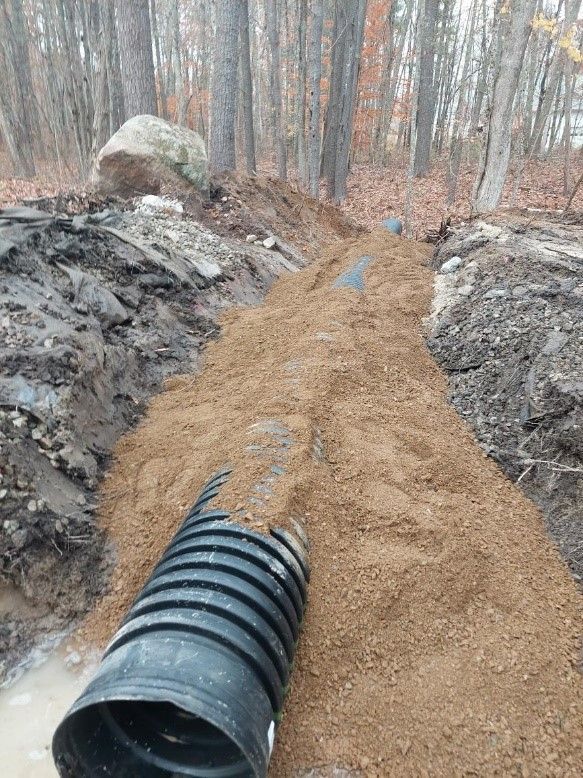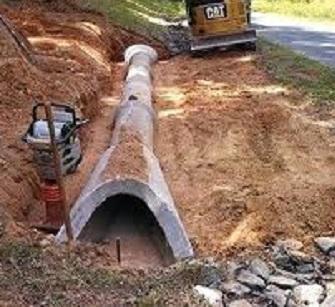Dependable Pad Construction for Your Project Needs
Dependable Pad Construction for Your Project Needs
Blog Article
Grasping Culvert Installation: Boost Your Land Water Drainage Initiatives
From choosing the best products to applying finest techniques, understanding culvert installation can substantially boost the performance and longevity of your land drainage system. By comprehending the intricacies of culvert setup, you can enhance your water drainage initiatives and make certain sustainable land use practices.
Significance of Culvert Setup
Guaranteeing appropriate culvert installation is paramount for keeping reliable land drain systems. Appropriate installation of culverts aids to funnel water away from roadways and buildings, reducing the risk of flooding and water damages.
Appropriate Sizing and Placement

Correct positioning of culverts is just as important. Culverts ought to be placed at the cheapest factor of the location needing water drainage to ensure effective water circulation. In addition, they should be mounted perpendicular to the all-natural incline of the land to avoid blockages and enable smooth water passage. Strategic placement can help stop waterlogging, dirt disintegration, and roadway damages, making certain the longevity and effectiveness of the land drain system.
Product Choice Tips
Picking the appropriate products is extremely important in guaranteeing the sturdiness and performance of culverts for efficient land drain systems. When selecting materials for culvert installation, it is vital to think about aspects such as the water circulation rate, dirt structure, and environmental conditions of the site.
Among one of the most usual products utilized for culverts is corrugated metal (Tree removal). Corrugated steel culverts are durable, affordable, and very easy to install. They are appropriate for areas with high water circulation rates and can withstand hefty loads. An additional popular option is concrete culverts, which use excellent toughness and long life. Concrete culverts are suitable for areas susceptible to corrosion or when a much longer service life is wanted.
For eco sensitive locations, plastic culverts may be preferred. Plastic culverts are light-weight, resistant to deterioration, and easy to carry and install. They are additionally understood for their smooth inside, which assists to maintain effective water flow. In addition, in areas where all-natural visual appeals are necessary, materials like rock or wood can be made use of to build culverts that mix effortlessly into the surroundings. Eventually, the selection of material must be based on a detailed assessment of the details needs and problems of the land drainage job.
Setup Methods and Finest Practices
Given the vital value of material selection in ensuring the functionality and longevity of culverts, the installation techniques and best practices play a crucial duty in the total success of land drainage systems. Correct installment is essential to stop concerns such as leakages, falls down, or clogs that can endanger the performance of the culvert.

During installment, care has to be taken to straighten the culvert correctly and give proper assistance to stop contortion. Backfilling should be done progressively and compacted in layers to prevent gaps and settlement. Correct compaction is necessary to protect against changing or sinking of the culvert in time.

Upkeep and Long-Term Treatment
Carrying out a thorough upkeep strategy is essential for making certain the long life and reliable efficiency of culverts in land water drainage systems. Routine assessments must be carried out to check for any kind of indications of damage, blockages, or erosion that can jeopardize the functionality of Tree removal the culvert. Clearing up particles such as leaves, branches, and sediment is crucial to prevent obstructing and keep the flow capacity of the culvert. Vegetation control around the culvert location is additionally crucial to avoid roots from causing architectural damages.
Routine maintenance jobs might include cleaning, repairing joints, enhancing inlet and electrical outlet structures, and guaranteeing appropriate incline and positioning of the culvert. Maintaining thorough records of maintenance activities, evaluations, and repair services is important for tracking the problem of the culvert over time and intending future upkeep needs.
Conclusion
To conclude, understanding culvert installation is essential for efficient land drain. Appropriate sizing, positioning, product option, installment strategies, and upkeep are vital variables to take into consideration. By following best practices and implementing long-term care strategies, landowners can boost their water drainage initiatives and make certain the long life and capability of their culverts. It is crucial to focus on these elements to avoid water damage, erosion, and various other costly concerns on the building.
Report this page